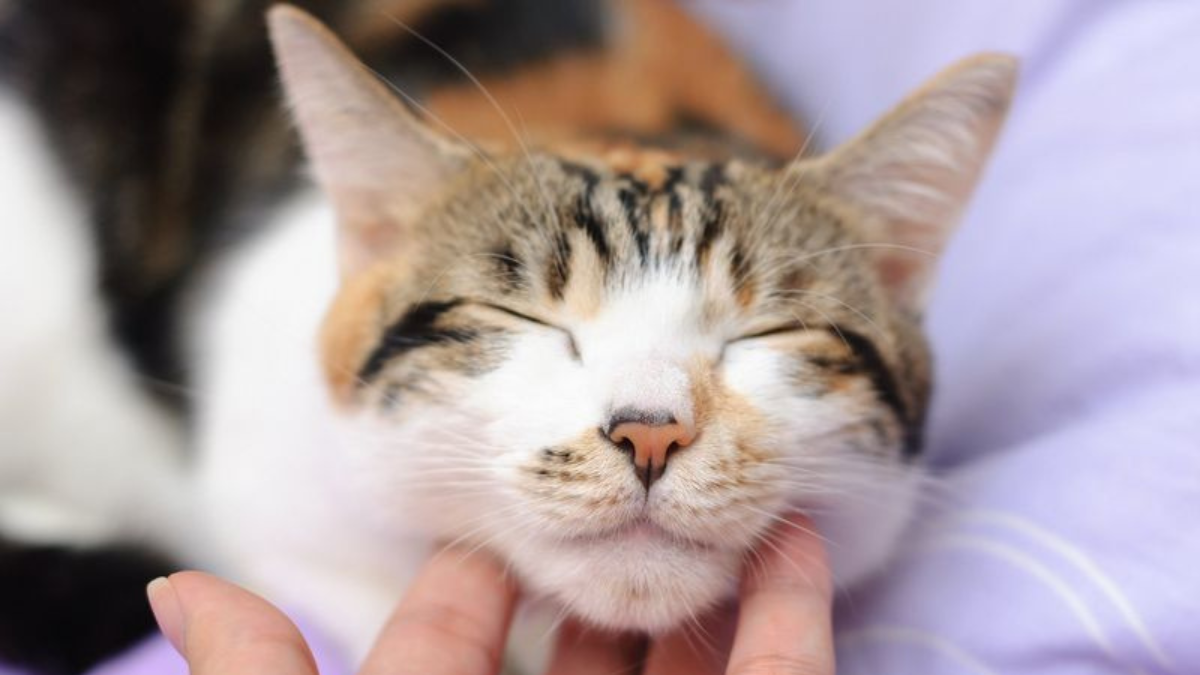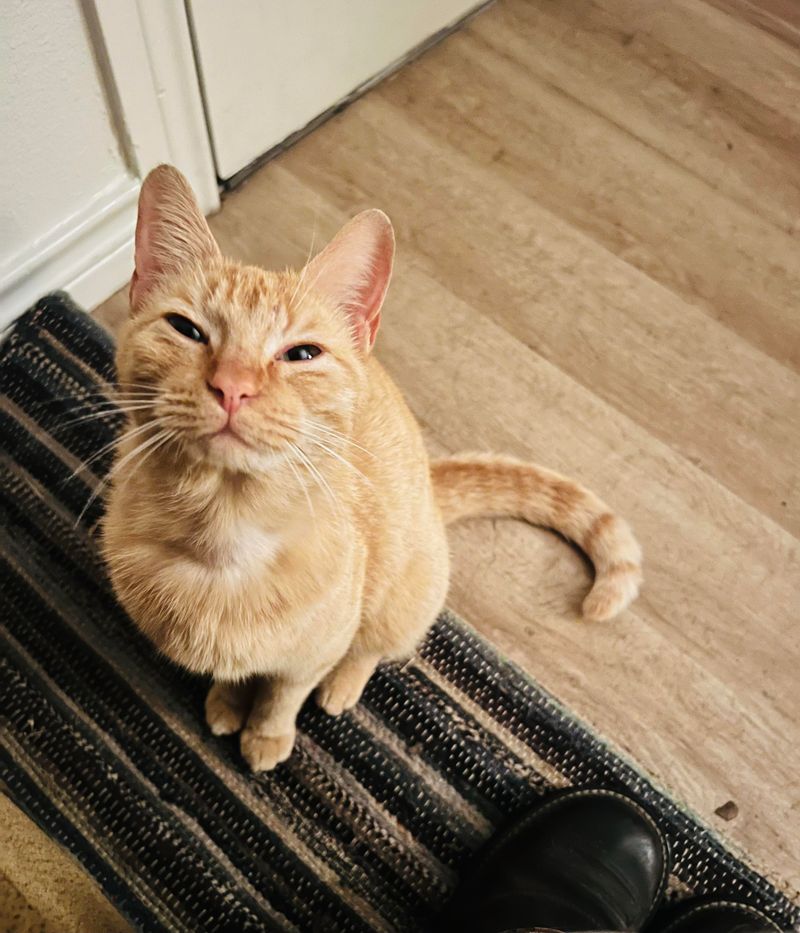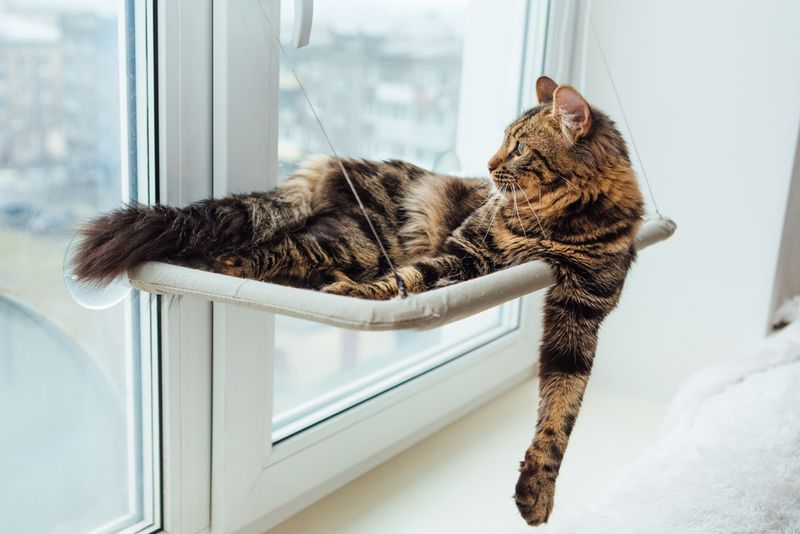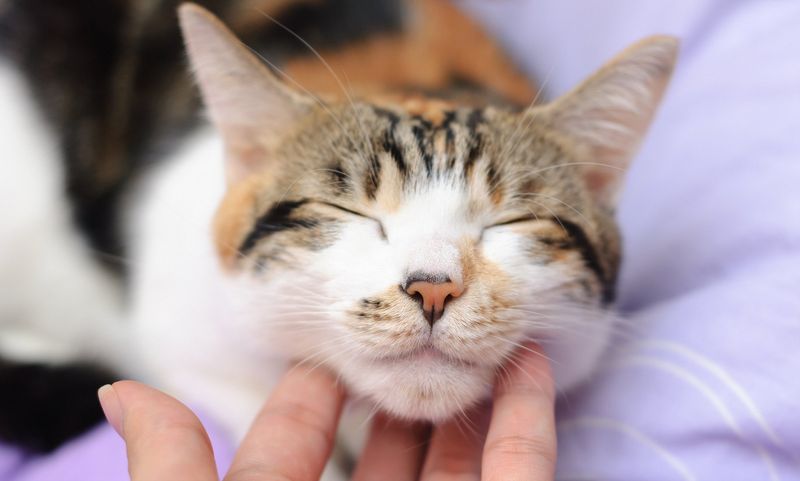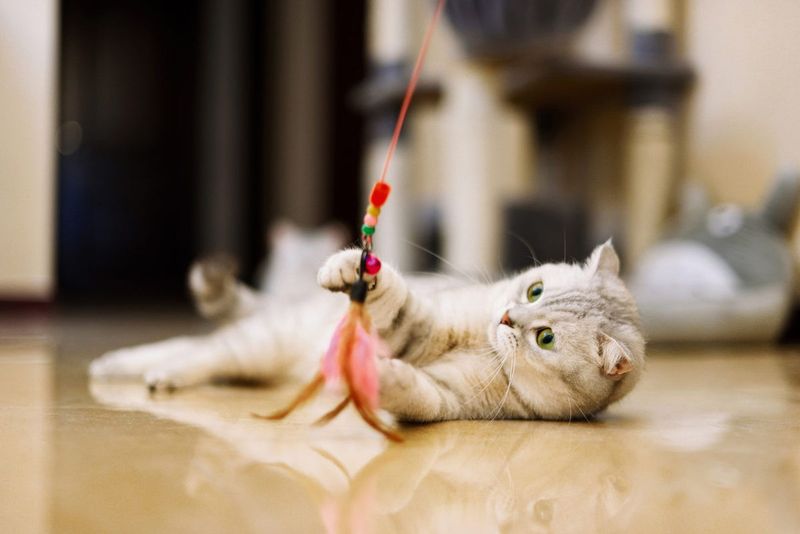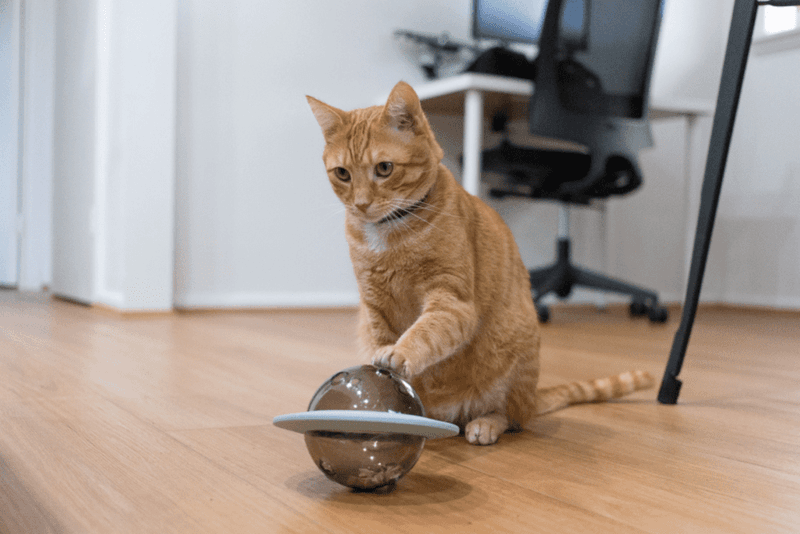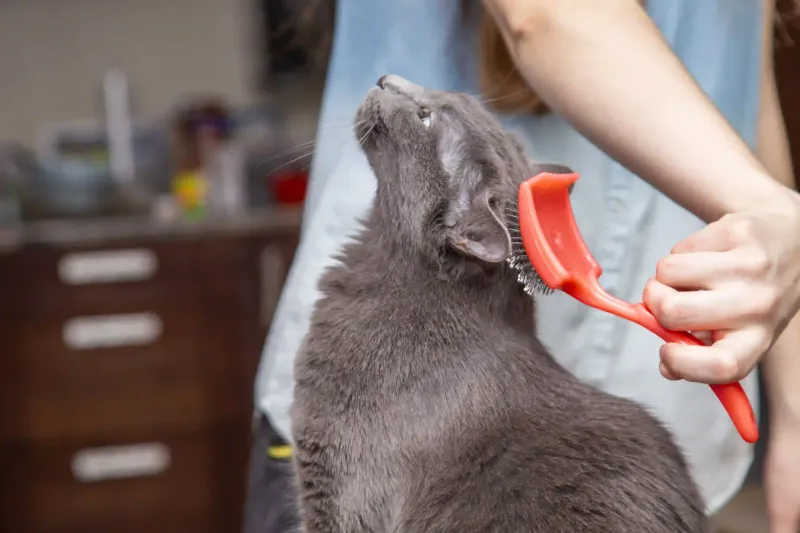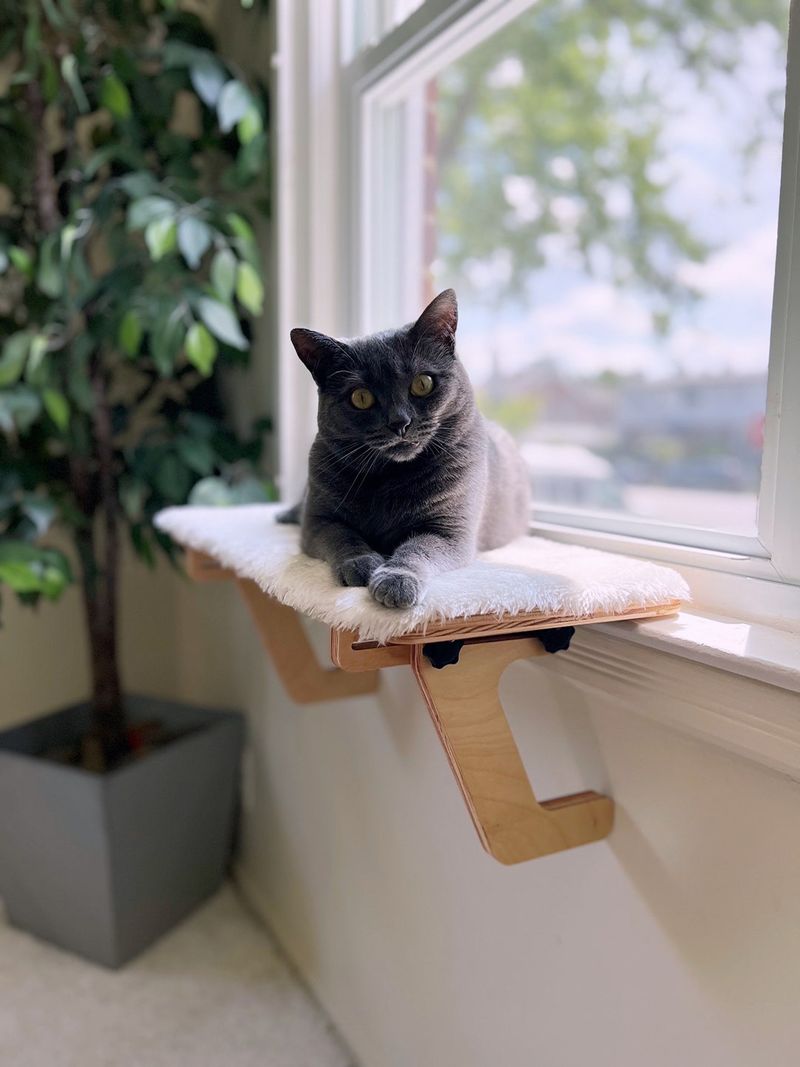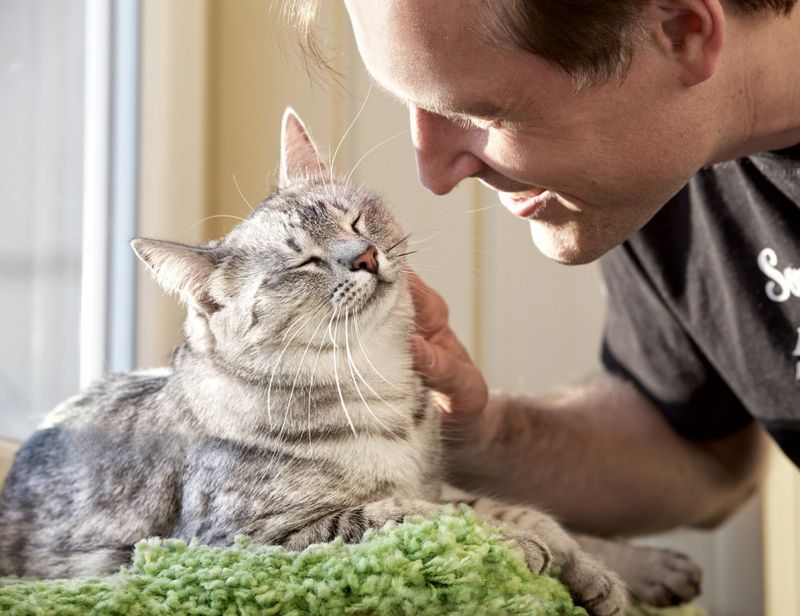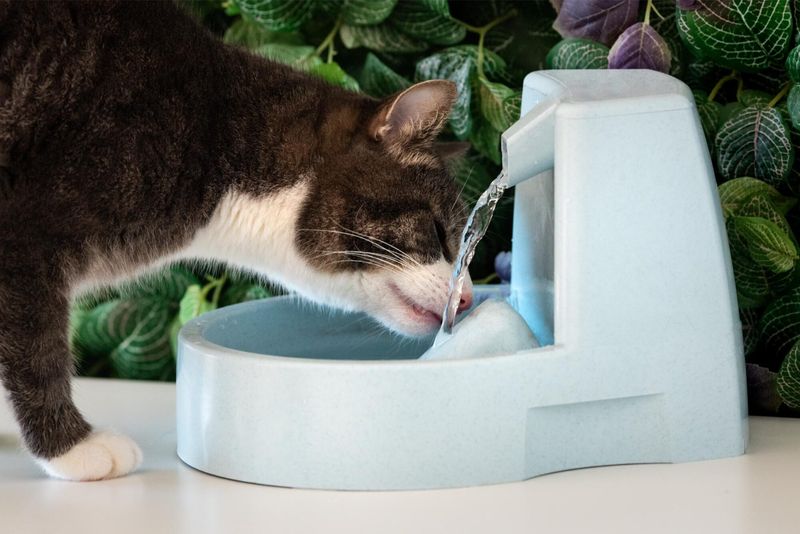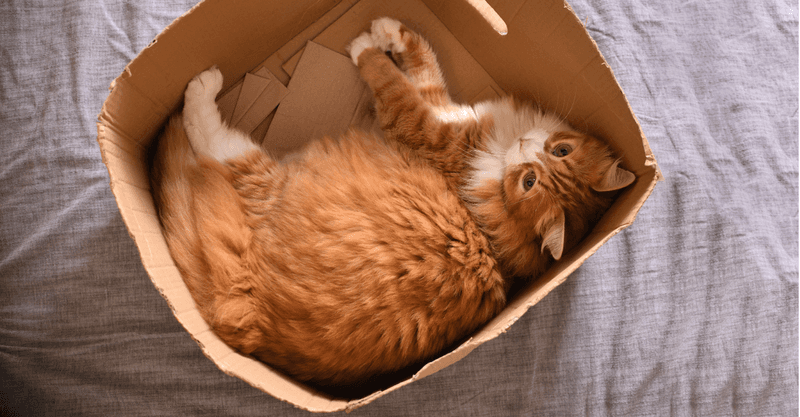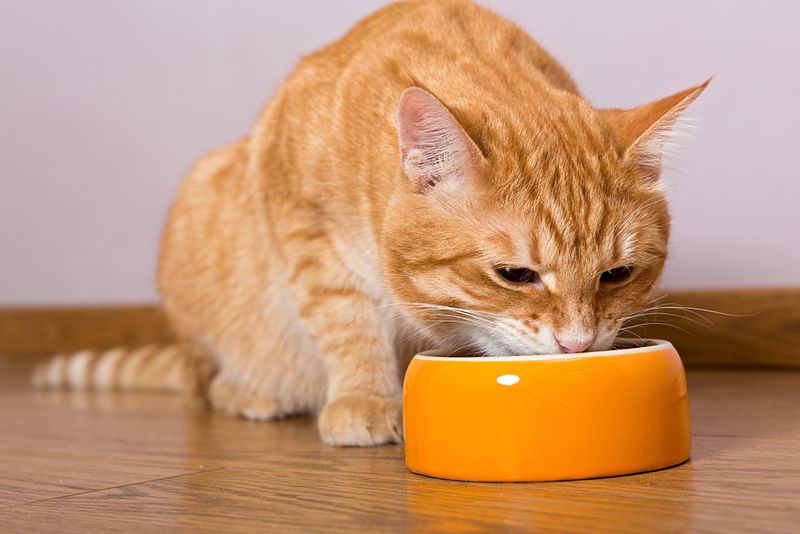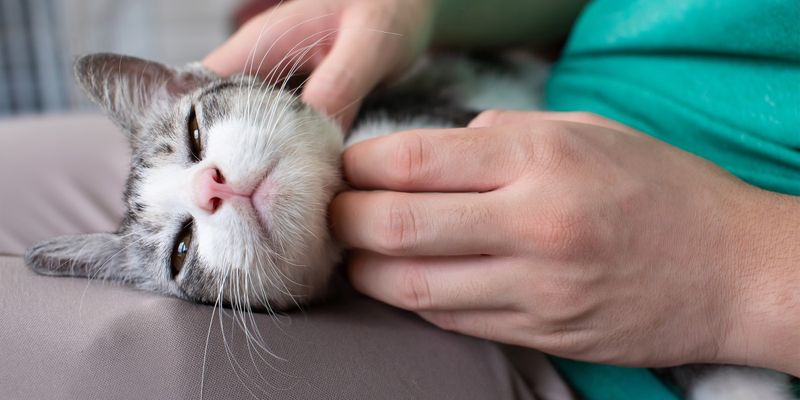📖 Table of Content:
- 1. Slow Blink Conversations
- 2. Respect Their Personal Space
- 3. Perfect the Head Scratch Technique
- 4. Scheduled Playtime Rituals
- 5. Treat-Hiding Surprises
- 6. Grooming Assistance Sessions
- 7. Provide Elevated Resting Spots
- 8. Gentle Voice Greetings
- 9. Fresh Water Fountain Installation
- 10. Create Cozy Hiding Boxes
- 11. Respect Their Mealtime Routine
- 12. Gentle Massage Techniques
Cats may seem aloof, but they’re actually quite responsive to human affection – when it’s on their terms. Building a strong bond with your feline friend doesn’t require grand gestures or expensive toys. Instead, it’s the small, consistent actions that truly make your cat feel loved and secure. These twelve simple gestures will help you speak your cat’s language and earn their precious trust and devotion.
1. Slow Blink Conversations
When your cat gives you a slow blink, or “kitty kiss,” they’re sharing affection and trust; you can mirror it by softly blinking back at them.
This simple communication technique mimics how cats naturally show they feel safe around each other. Many cats will respond by blinking back or approaching you afterward.
Practice this daily to strengthen your bond. The beauty of slow blinking is that it can be done anytime, anywhere, and costs nothing but offers your cat reassurance that you understand their language.
2. Respect Their Personal Space
Independence and personal space mean everything to cats, so letting them retreat to their safe spots undisturbed builds deep trust.
Create designated hiding spots throughout your home where your cat can observe the household activities without feeling exposed. These might include cat trees, window perches, or cozy boxes.
Never force physical interaction when your cat is clearly seeking solitude. The paradox of cat ownership is that respecting their need for space often results in them seeking your company more frequently.
3. Perfect the Head Scratch Technique
By scratching the scent gland spots on their cheeks, chin, and ear bases, you’re giving cats pleasure and letting them stamp you as part of their territory.
Use your fingertips to gently massage these areas with small, circular motions. Pay attention to your cat’s body language to find their sweet spots.
Most cats lean into scratches they enjoy and pull away from unwanted touches. Learning exactly where and how your individual cat likes to be petted shows that you respect their preferences and builds a foundation of trust.
4. Scheduled Playtime Rituals
Regular play sessions tap into your cat’s natural hunting instincts while creating positive associations with you. Even just 5-10 minutes twice daily can make a significant difference in your relationship.
Wand toys that mimic prey movements are particularly effective. Allow your cat to successfully “catch” the toy occasionally to prevent frustration and build confidence.
The timing matters too – cats are crepuscular hunters, meaning they’re naturally more active at dawn and dusk. Scheduling playtime during these windows aligns with their biological rhythms and helps prevent those 3 AM zoomies that disrupt your sleep.
5. Treat-Hiding Surprises
Cats are natural hunters who thrive on mental stimulation. Hiding small treats around your home creates an enriching treasure hunt that satisfies their instinctual needs.
Start with easy hiding spots where your cat can see you place the treats, then gradually increase the challenge. This activity combines the joy of discovery with food rewards, creating positive associations throughout your living space.
Food puzzles and treat-dispensing toys offer similar benefits. The mental workout helps prevent boredom and behavior problems while giving your cat the satisfaction of working for their rewards – just as they would in nature.
6. Grooming Assistance Sessions
Spending half their awake time grooming, cats rely on this ritual; helping them out not only shows affection but also builds trust.
Brush your cat with gentle, consistent strokes in the direction their fur grows. Short sessions of 3-5 minutes are typically more effective than longer ones that might test your cat’s patience.
Beyond the bonding benefits, regular brushing reduces hairballs, distributes natural oils through their coat, and gives you an opportunity to check for any skin issues or parasites. For many cats, being brushed becomes a cherished routine they actively seek out.
7. Provide Elevated Resting Spots
Height equals security in the feline world. Wild cats climb trees to survey their territory and avoid predators, and your domestic cat has retained this instinct.
Window perches, cat trees, or cleared bookshelf spaces offer your cat commanding views of their domain. These elevated spots help them feel safe while satisfying their natural desire to monitor household activities.
Placing these perches near windows adds the bonus entertainment of bird and squirrel watching. Your cat will appreciate having options at different heights throughout your home, creating a three-dimensional territory that meets their psychological needs for security and observation.
8. Gentle Voice Greetings
Cats respond positively to high-pitched, soft vocalizations that mimic kitten sounds. Using a special greeting voice when you enter a room acknowledges your cat’s presence and shows they matter to you.
Consistency helps, too. Many cats learn to recognize their names and specific phrases, especially when associated with positive experiences like mealtime or play.
The tone matters more than the words themselves. Keep your voice gentle and slightly higher than your normal speaking voice. This approach is particularly effective with shy cats who may find direct approaches intimidating but will gradually warm up to your consistent, gentle vocal acknowledgments.
9. Fresh Water Fountain Installation
Running water fascinates cats due to their evolutionary history. In the wild, moving water is typically fresher and safer than stagnant pools.
A cat water fountain satisfies this instinct while encouraging proper hydration. Many cats drink more water from fountains than from still bowls, which can help prevent urinary tract issues – a common health problem in domestic cats.
Beyond the health benefits, providing a fountain shows attentiveness to your cat’s preferences. Place it away from their food (cats naturally prefer to drink away from where they eat) and in a quiet location where they can drink without feeling vulnerable.
10. Create Cozy Hiding Boxes
The internet joke that cats love boxes isn’t just a meme – it’s backed by science. Enclosed spaces provide security and help cats regulate their body temperature and stress levels.
Strategically place cardboard boxes, cat caves, or covered beds in quiet corners of your home. Line them with soft blankets that carry your scent to create comforting retreats.
Rotating new boxes occasionally keeps the environment novel and interesting. For shy cats, these hiding spots are particularly important safe zones. Respecting these spaces as cat-only territories shows that you understand and honor their need for occasional retreat from household activity.
11. Respect Their Mealtime Routine
Consistency around feeding creates security for your cat. Establishing regular mealtimes helps regulate their digestive system and prevents anxiety about when the next meal will arrive.
Cats prefer to eat in quiet locations where they don’t feel vulnerable. Position food dishes away from litter boxes and in areas with minimal foot traffic or loud noises.
Fresh food matters tremendously to cats, who have sensitive noses and may reject food that’s been sitting out too long. Using shallow, wide dishes prevents whisker fatigue – the discomfort cats experience when their sensitive whiskers touch the sides of deep bowls during eating.
12. Gentle Massage Techniques
Beyond regular petting, learning basic cat massage techniques can deepen your bond and provide health benefits. The base of the tail, shoulders, and cheeks are particularly responsive areas for most cats.
Use your fingertips to apply gentle pressure in small circular motions. Watch for signs of enjoyment like purring, kneading, or relaxed posture with eyes half-closed.
Massage can help older cats with joint stiffness and all cats with circulation. Keep sessions short at first – just 2-3 minutes – and gradually extend them as your cat becomes more comfortable. This focused attention shows care while helping reduce stress hormones in both you and your feline friend.
